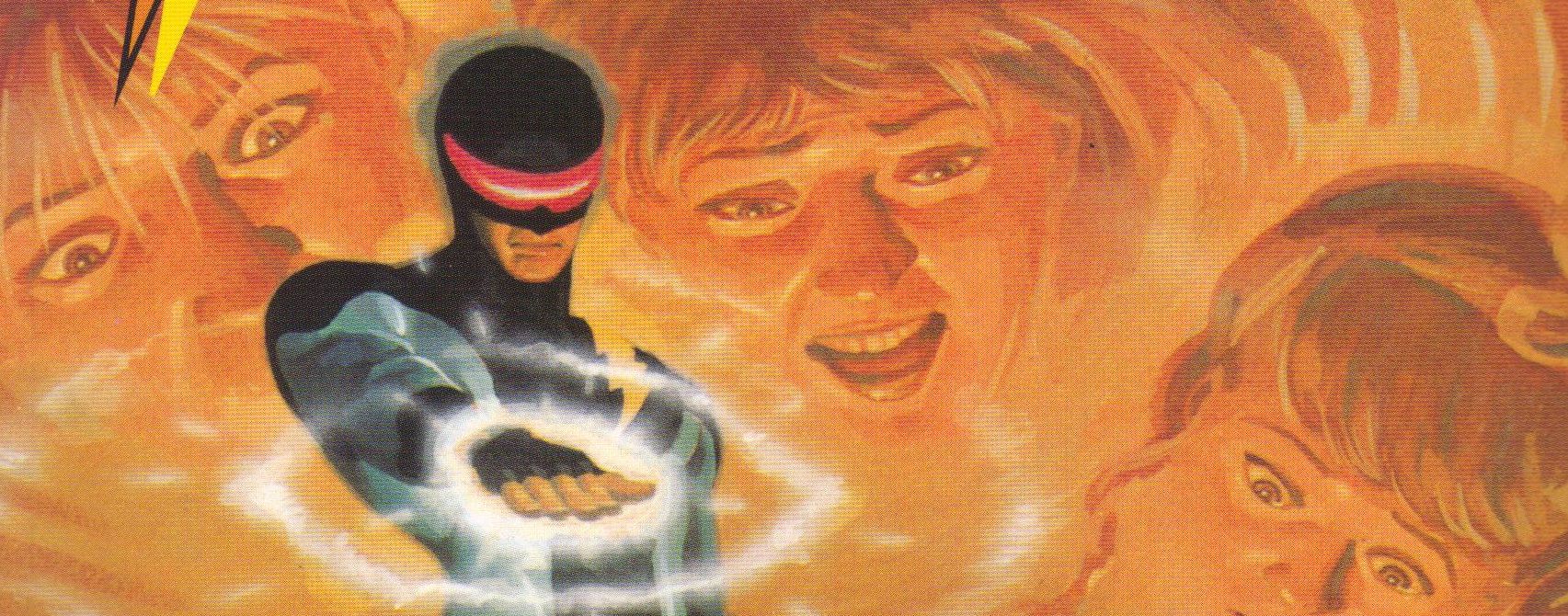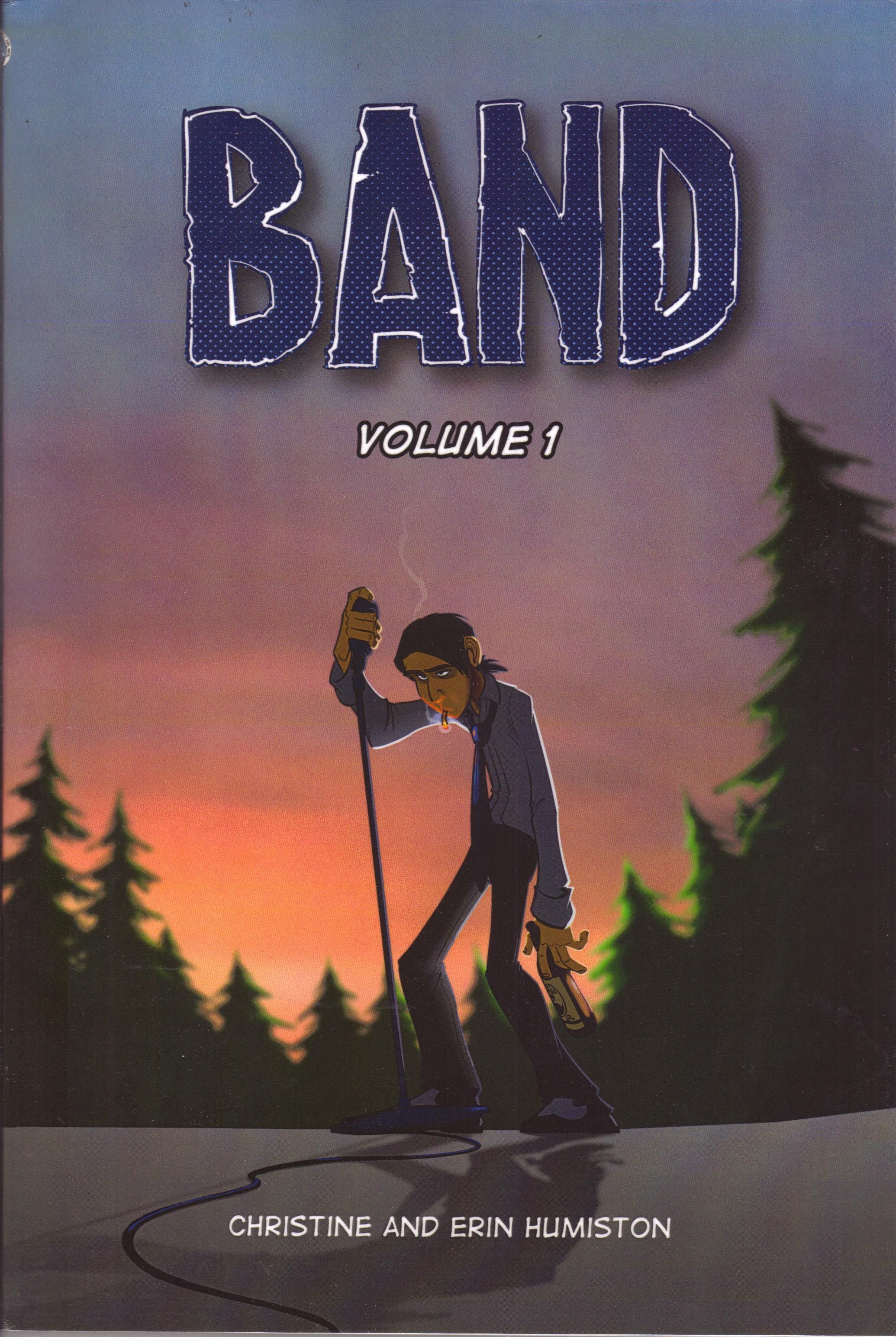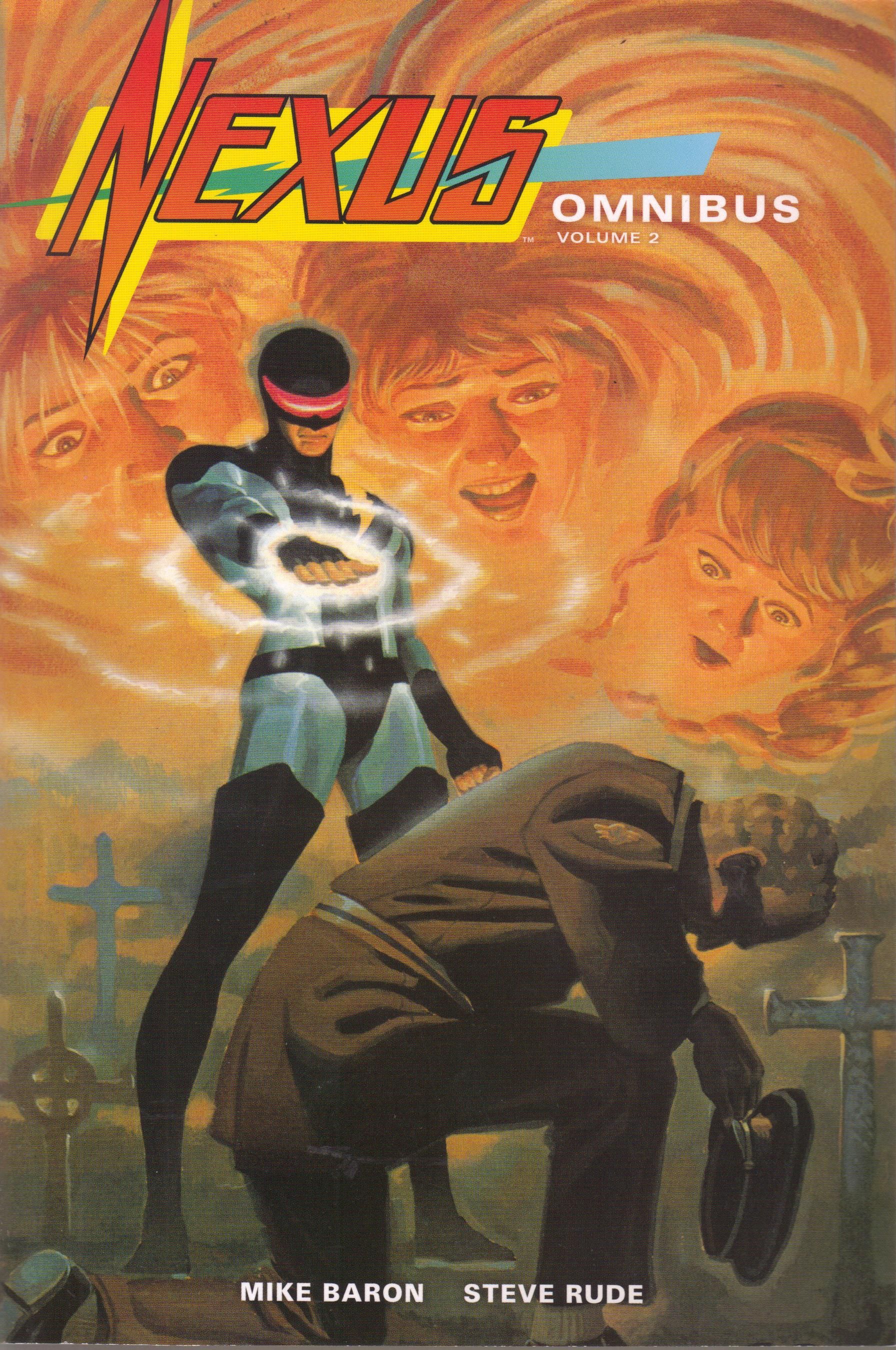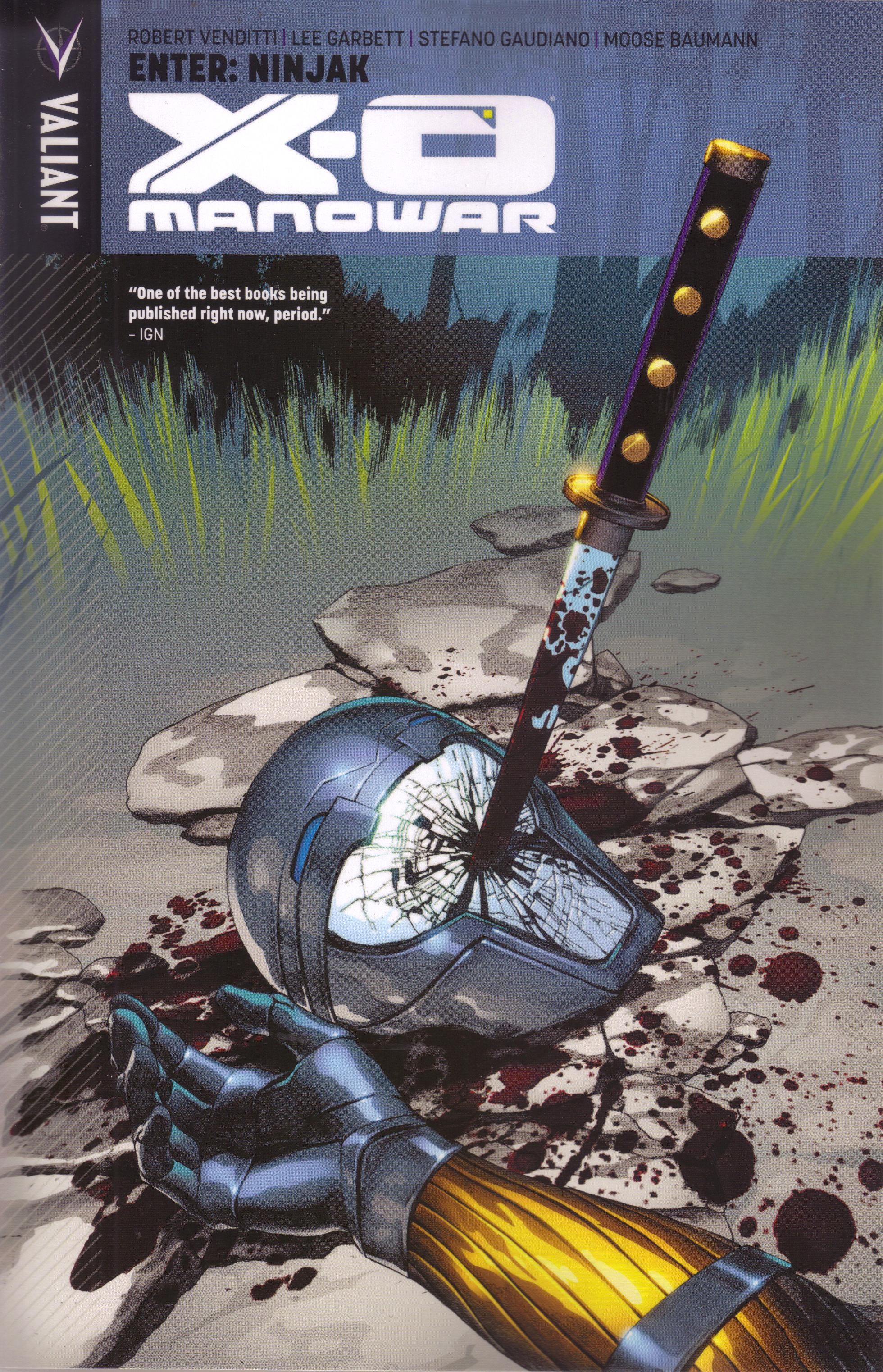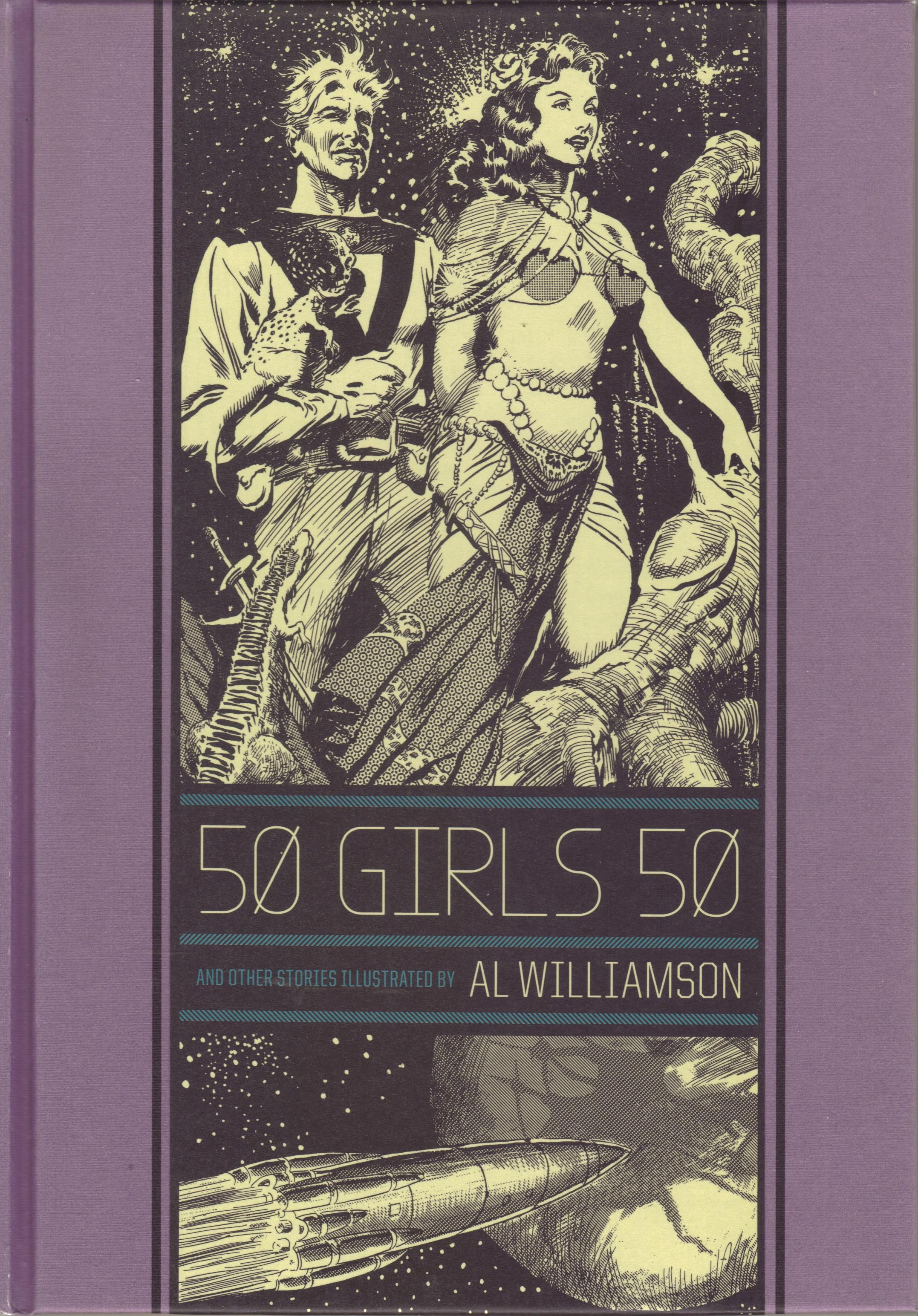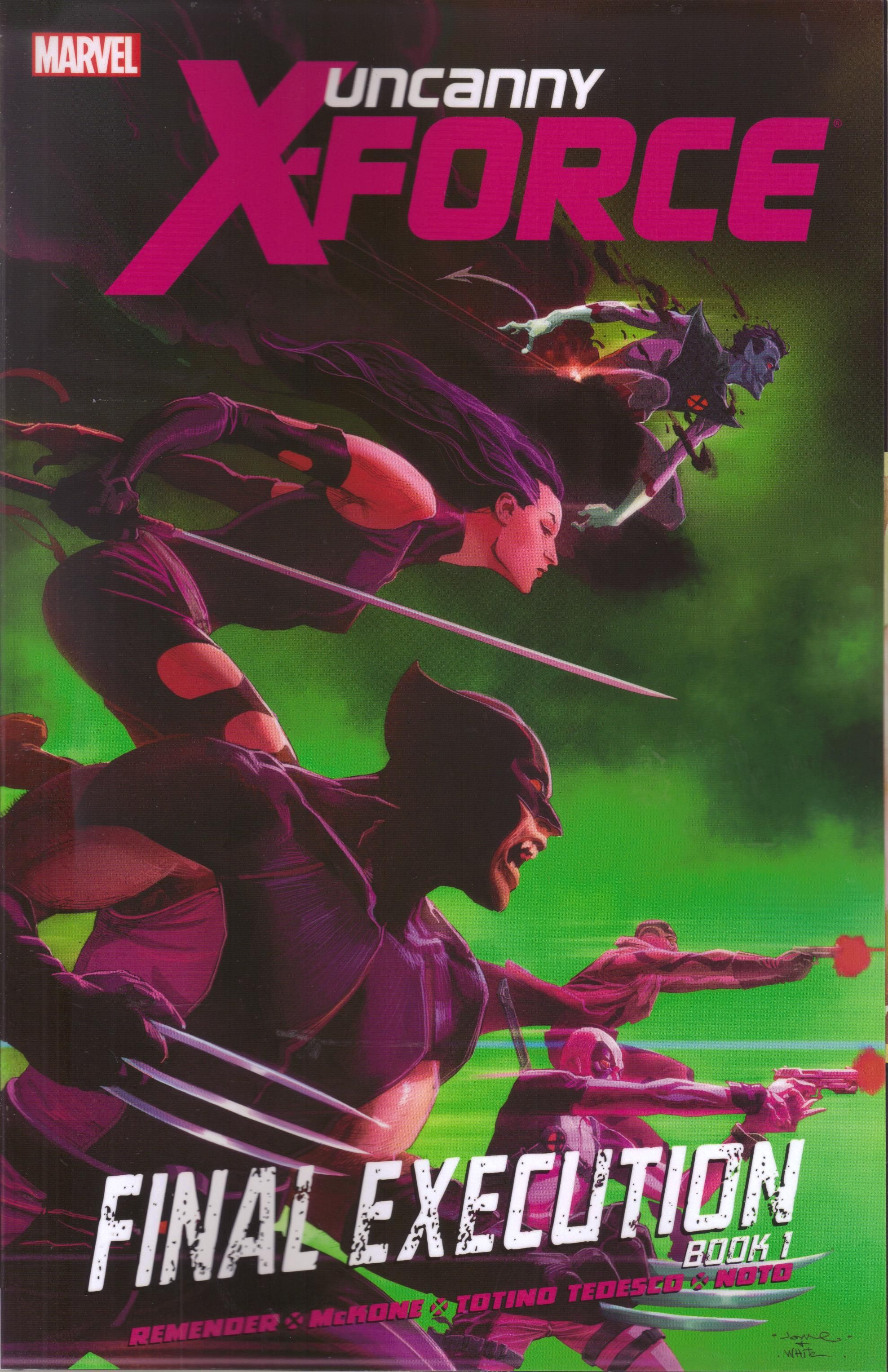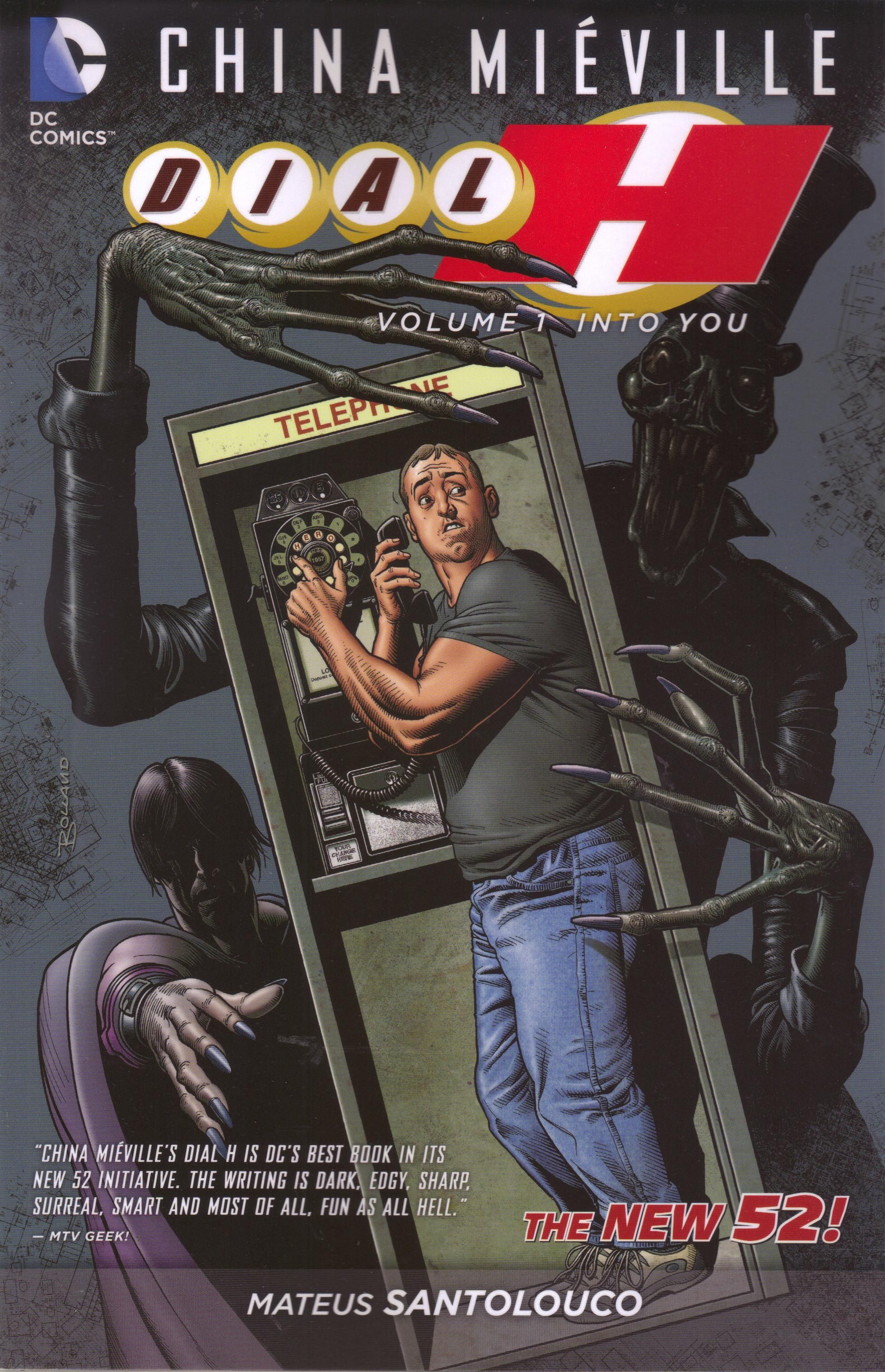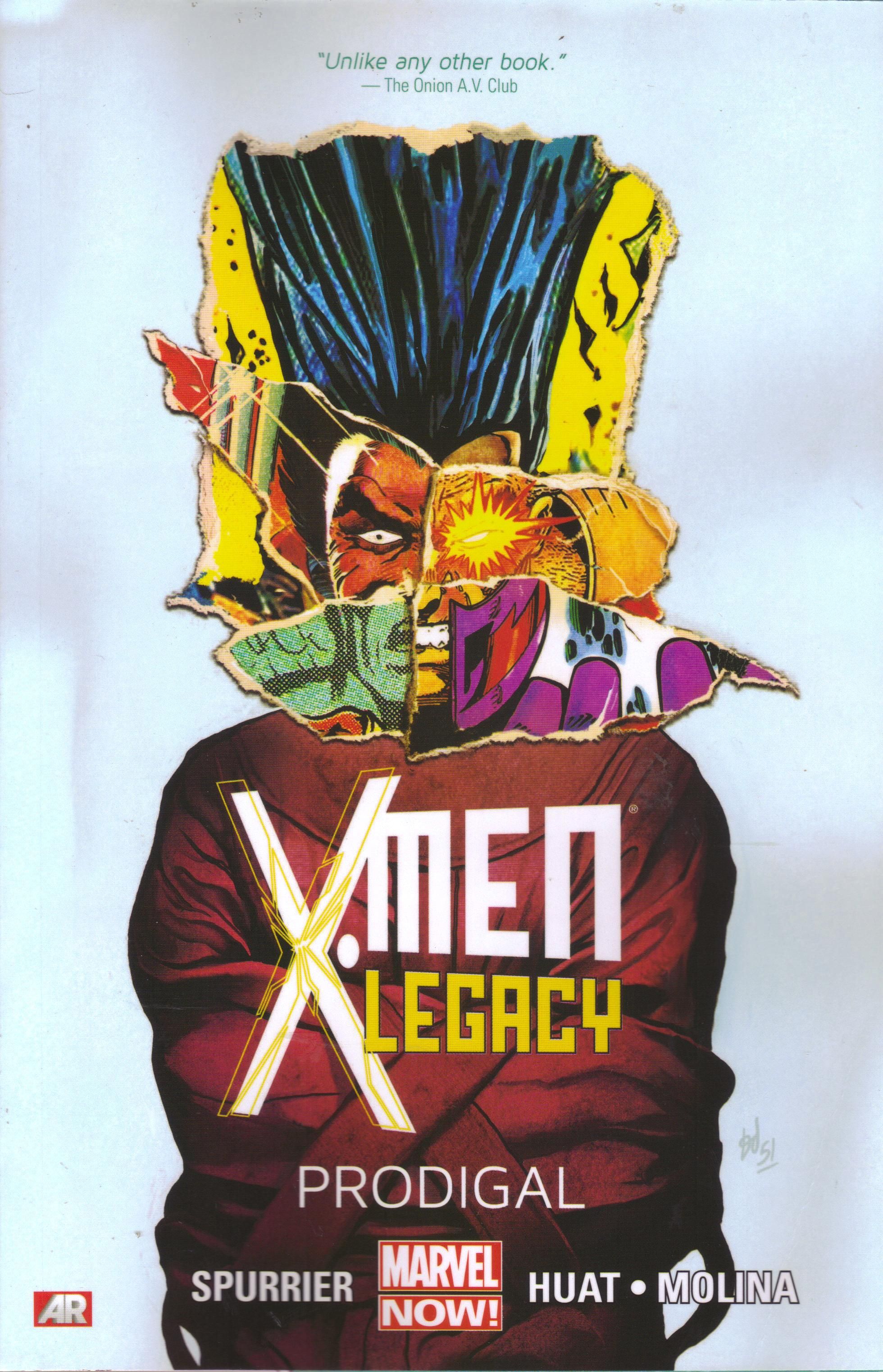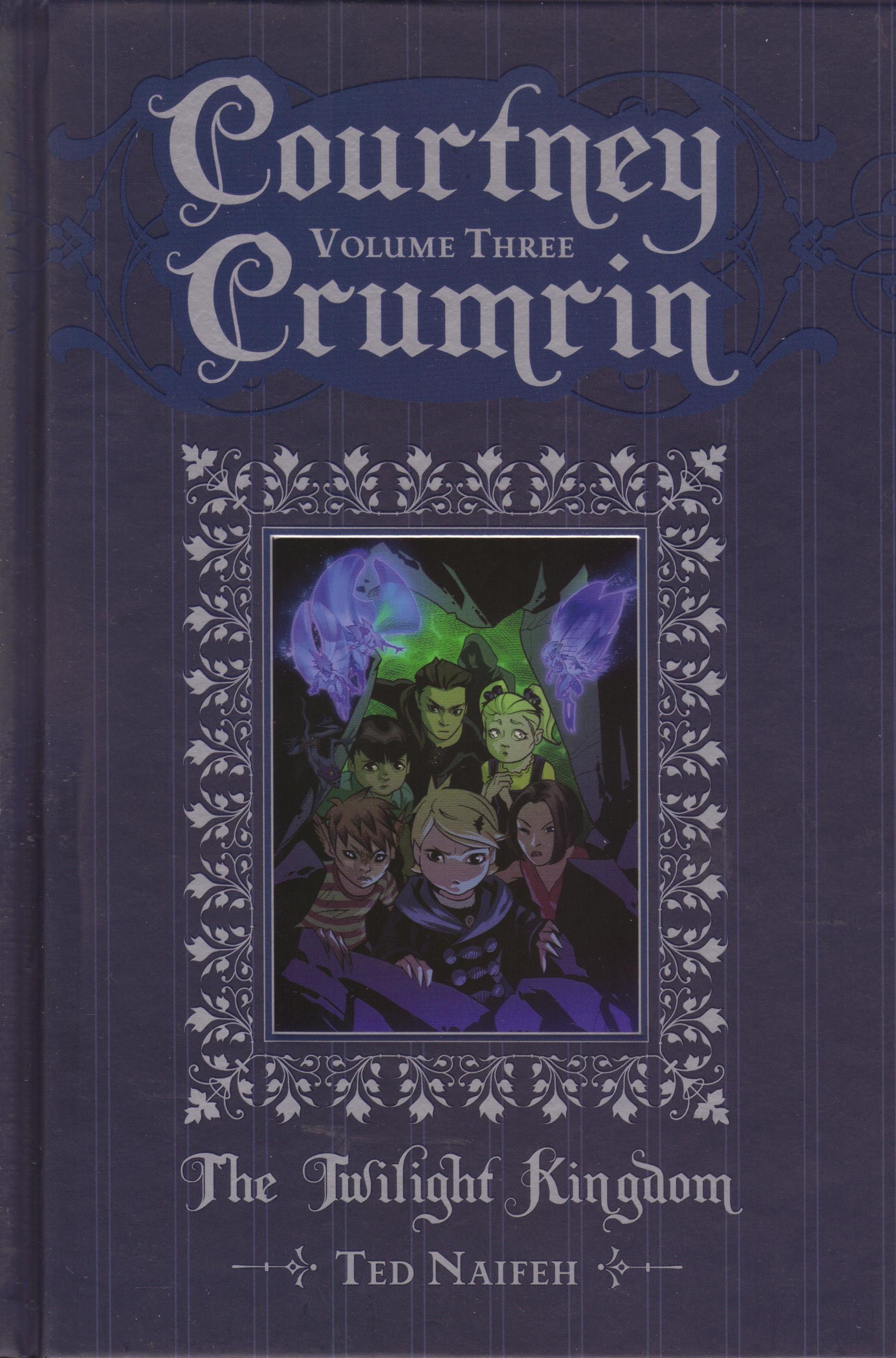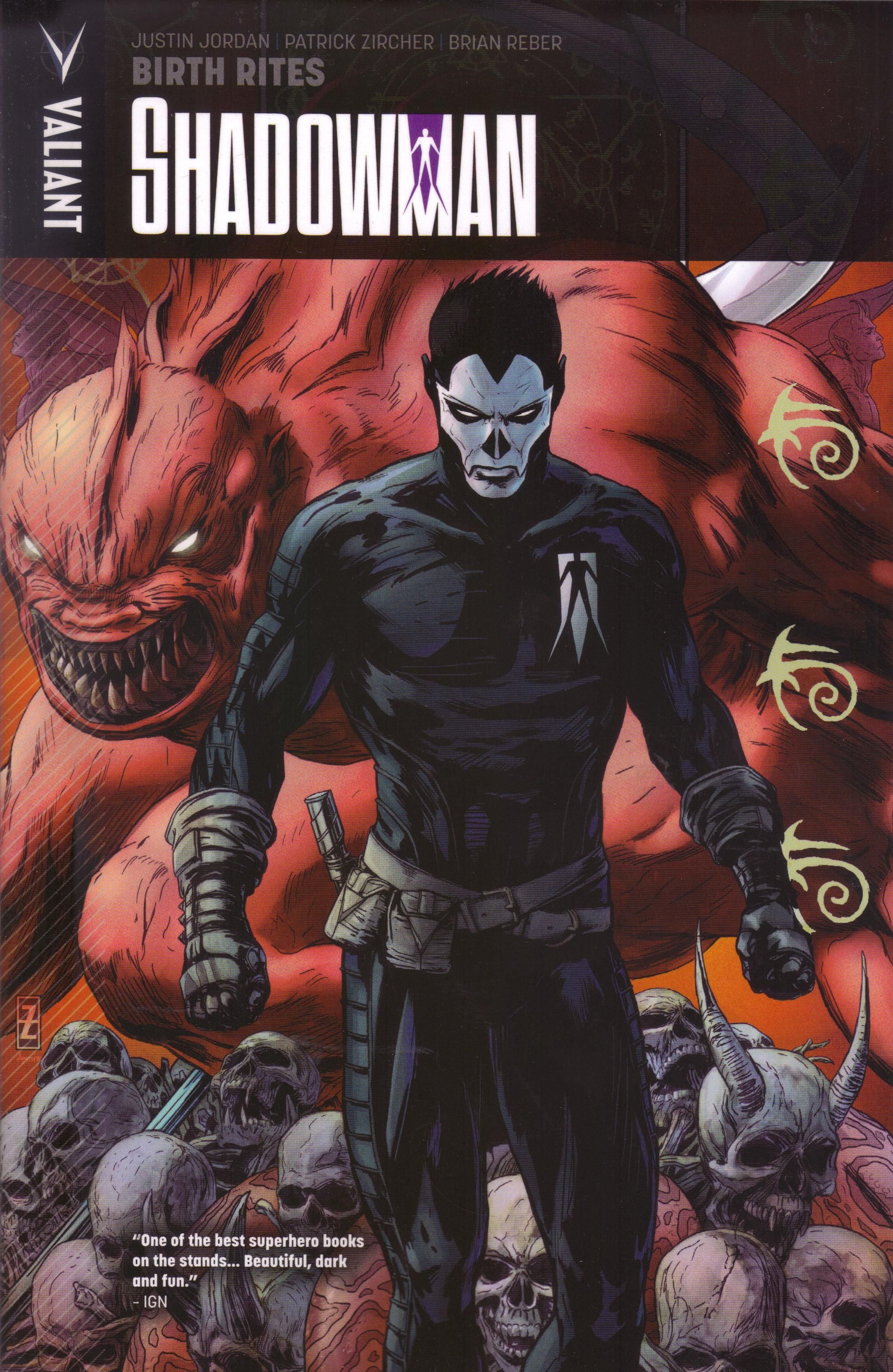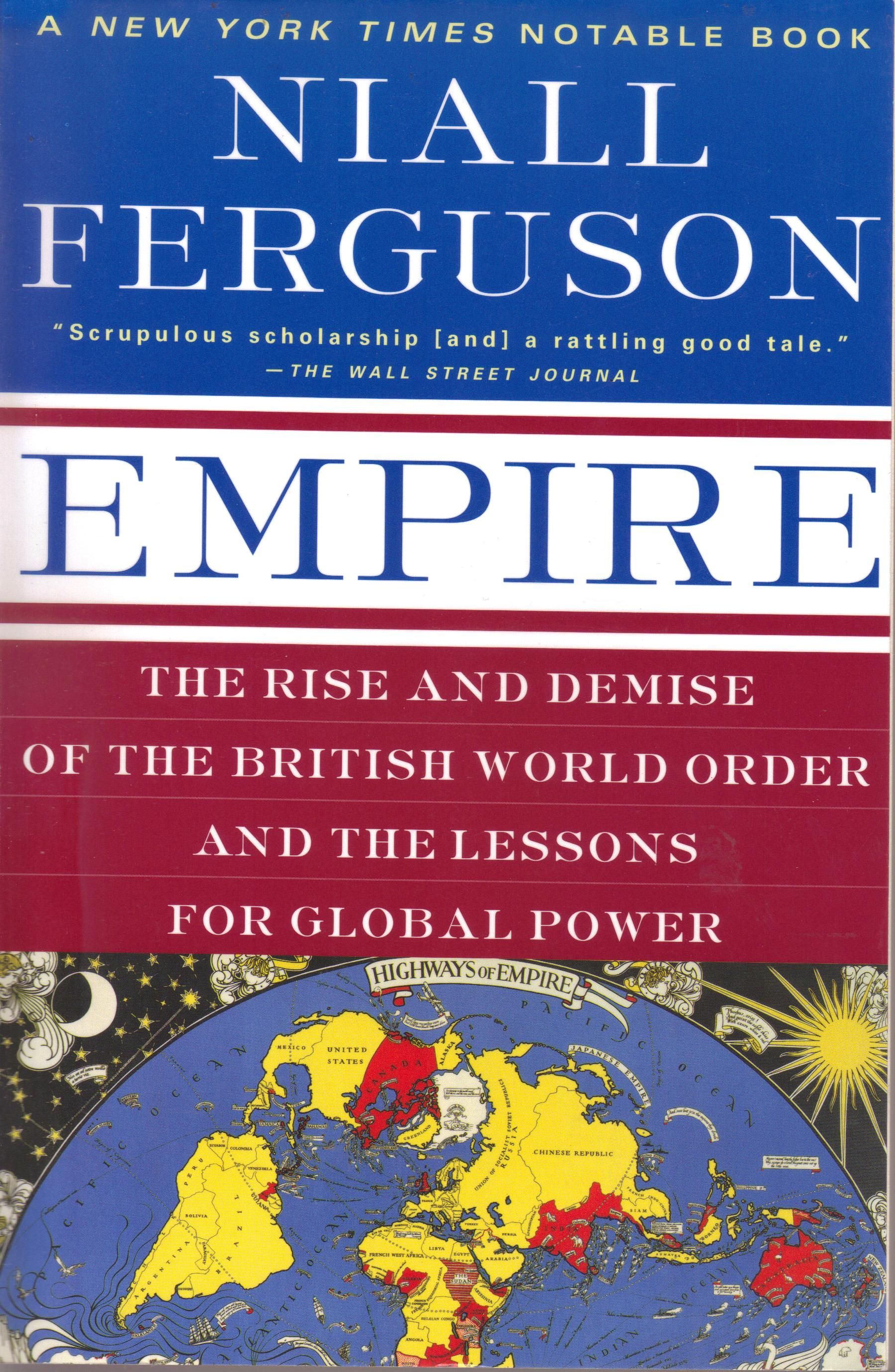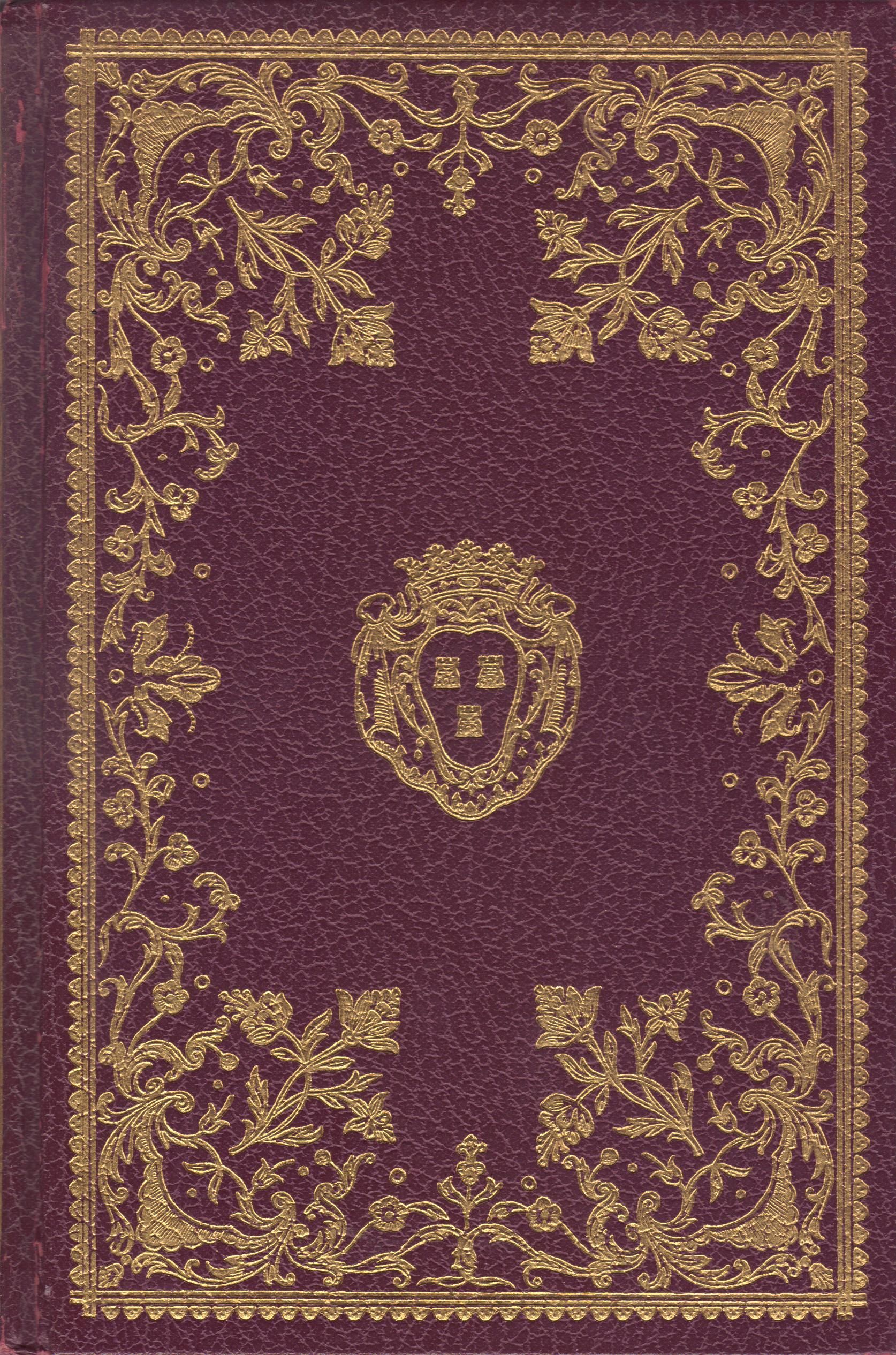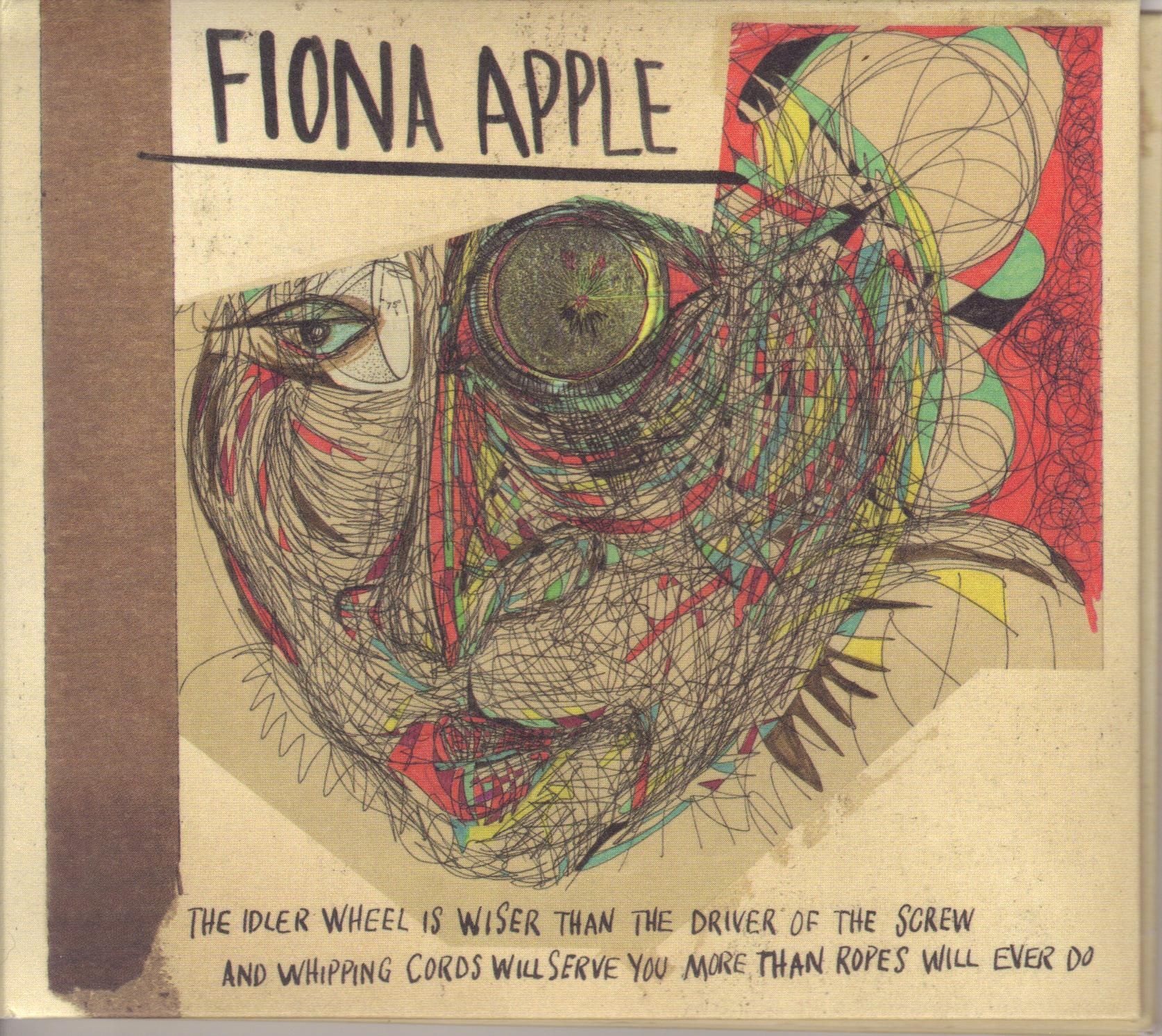"And for a while things were cold / They were scared down in their holes / The forest that once was green / Was coloured black by those killing machines"
Band volume 1 by Christine Humiston (writer) and Erin Humiston (artist). This is self-published, and it doesn't have a price on it. Each issue is 3 bucks, so this should be 12 dollars. Beats me!
I wanted to mention that Band is now out (or will be out soon) in a trade paperback, in case you're interested. I'm not going to write a long review, because I already did that, but I will reiterate that it's a pretty good comic well worth your ducats. I had only read the first 3 issues, so in this collection I got to read issue #4, in which Dave, the new bassist, gets to see the antagonism between Gorilla, the band's guitarist, and Ace, the band's lead singer (and the one whose girlfriend broke up with at the beginning of the comic, setting the plot in motion). Issue #4 is a bit heavier than the first 3, as Humiston begins to get into Ace's drinking a bit more - he's been drinking a lot since his girlfriend dumped him - but she does try to keep things humorous. I hope that Humiston begins to move Ace past his dumping, because he started as a sympathetic character - she dumped him, after all - but is becoming less likable as the series moves on, and that's not great for the comic's development. Still, Humiston writes with a lot of verve, and her husband, Erin, has a nice, dynamic, cartoony style, and Band is a neat book. The Humistons were nice enough to send this volume to me, and I appreciate it. Maybe I'll see them at a convention again and I can actually give them some money for their comics!
Rating: ★ ★ ★ ★ ★ ★ ★ ☆ ☆ ☆
Doom 2099: The Complete Collection by Warren Ellis by Warren Ellis (writer), John Francis Moore (plotter, issues #24-25), Pat Broderick (penciller), David Klein (artist), John Royle (penciller), Steve Pugh (penciller), Ashley Wood (penciller), John Buscema (penciller), John Nyberg (inker), Scott Koblish (inker), Jim Daly (inker), Joe Andreani (colorist), Ben Sean (colorist), Megan McDowell (colorist), John Costanza (letterer), Alex Starbuck (editor), and Nelson Ribeiro (collection editor). $39.99, 355 pgs, FC, Marvel.
An interesting question to ponder is "When did Warren Ellis become 'WARREN ELLIS'?" You know, the guy everyone thinks of when they talk about Warren Ellis. He wasn't always that guy, although he's always been interested in the same things when it comes to comic book writing. It's a tough question because of the fact that he's always been a good writer and he's always been fascinated with futurism, and in some of his early works like Lazarus Churchyard, it's obvious that he already knows what he's doing. His early Marvel career, however, is somewhat checkered, and that's why it becomes an interesting question. All of the work is far more interesting than you'd expect from mid-1990s Marvel work (and I haven't read his Excalibur yet, but I've heard about it), but there are certainly plenty of stumbles along the way. That's why I wonder if WARREN ELLIS only first blossomed with StormWatch (July 1996), which saw his vision distilled into a purer form. Feel free to disagree, of course!
I say this because Doom 2099 is a bit of a mess, but it's an Ellisian mess, which means it's at least an interesting mess with plenty of potential. Ellis picks up some of Moore's plot threads and puts Doom back in charge of Latveria, so the first few issues of the book feel like he's really trying to get to where he wants to go rather than where Moore was going with the comic. Then, in issue #29, he decides to conquer the United States, which is obviously Ellis's big plot for the book. It allows him to make typical Ellisian comments about corporations ruling us all and how much that sucks (don't get me wrong, I agree with him, but he's not exactly subtle about it) and lets him write an anti-hero, which is the way Ellis writes everyone, even people who shouldn't be anti-heroes (like Captain America in Secret Avengers). And, of course, we get loads and loads of mid-1990s Internet talk, which probably felt cutting-edge at the time but feels really dated now. Ellis has always been ahead of the curve when it comes to technology, or at least tech-speak, so the book, while feeling dated, also still feels unlike a lot of other comics, and it's to Ellis's credit that he's able to wrangle a coherent plot out of so much jargon. Eventually, of course, the corporations strike back, there's a fight to the death, and Doom has to regroup. But he's Doom, so of course he ends up on top!
Ellis isn't helped by the mid-1990s artwork, either. Broderick isn't bad, but he's miscast for this tech-savvy stuff that Ellis wants him to draw - he's a competent or better-than-average superhero artist, and Doom 2099 is certainly not regular superheroics in action. As this is early in the era of computer coloring, the garish work in that regard doesn't help the book, either. At this point in his career, Pugh was still better suited for horror, as he had been doing Animal Man prior to this, and his work doesn't translate too well. This is partly because of the coloring, but Pugh has never been great at action, and this book does call for a lot of it. Ironically, the digital painting style that Pugh later used on Shark-Man (SHARK-MAN REPRESENT!!!!!) and Hotwire would probably suit Ellis's scripts very well. Too bad Pugh didn't have access to a time machine so he could go back and tell mid-1990s Pugh what to do. Ashley Wood's oddball, elongated, disjointed artwork probably works best with Ellis's scripts (this was before Wood became more esoteric, like he is now), and it's too bad he didn't draw more of the book.
If you're an Ellis fan, this is an interesting artifact to own. It's not exactly that good in terms of comics, but Ellis is compelling even when he's not on top of his game, mainly because you can almost feel the sheer weight of ideas pouring out of him onto the page. He was able to refine this later in his greatest comics, but Doom 2099 is, unfortunately, not one of those. Still, it's a weird relic from a weird era of comics, and those are always fun!
Rating: ★ ★ ★ ★ ★ ½ ☆ ☆ ☆ ☆
Nexus Omnibus volume 2 by Mike Baron (writer), The Dude (penciler, issues #12-16, 18-22, 24-25), Eric Shanower (artist, issue #17; inker), Keith Giffen (penciler, issue #23), John Nyberg (inker), Rick Bryant (inker), Les Dorscheid (colorist), and Steve Haynie (letterer). Back-up stories by Mike Baron (writer), Eric Shanower (artist/letterer), Mark A. Nelson (artist), Hilary Barta (penciler), Rick Taylor (inker), Les Dorscheid (colorist), and Steve Haynie (letterer). Collections Editor: Chris Warner. $24.99, 424 pgs, FC, Dark Horse.
The second Nexus Omnibus is a bit better than the first, but it's still clear that this, for me, this is a series more to be admired than really loved. I wasn't too impressed with Baron's writing in the first volume, but it does get better in this volume, which covers issues #12-25 of the 1980s ongoing series. Baron is still not great at characterization - the people in the series tend to seem more like abstractions than actual people - but his big plot in this volume - that Nexus has lost his powers because he refuses to act as an executioner anymore - is pretty interesting, especially as Baron uses it to shed more light on his origin. The arc of Nexus trying to suppress his dreams, which leads to his loss of powers, which then becomes problematic when a large fleet shows up at Ylum to attack it, is a pretty good story. The fact that Nexus, like many celebrities, surrounds himself with people who do not have his best interests at heart is also well done by Baron. Interestingly enough, the two best issues in the volume are the first and last - in the first, Nexus hunts down a Sov general who knew his father and is seemingly immortal, and Nexus's actions in this lead to many, many bad consequences; in the last, he tracks down a man who is a wonderful family man but whose political career might destroy the solar system, and Nexus is conflicted about the dichotomy. This issue will also have far-reaching consequences - at least I imagine Baron will return to the fall-out in later issues - and Baron does a nice job with both stories, showing that Nexus doesn't murder in a vacuum.
Rude's art is again the highlight, and it's again worth pointing out how amazing it is. The Dude's pencils are wonderfully fluid and dynamic, and he creates entire worlds and populates them with amazingly-designed creatures. It's absolutely gorgeous artwork, moving easily from space-faring derring-do to the dark world under Ylum, from the action scenes of Nexus killing people to the quieter moments between Horatio and Sundra. As good as the two guest artists are - Shanower, at this time, seemed to be actively aping Rude, while Giffen was taking his Kirby-pastiche to its weird late-1980s apotheosis - it's clear that the book suffers a bit when Rude's not around. Baron's stories aren't bad, but The Dude's artwork raises this series to the heights, and it's the reason why should you should buy this, if you're at all interested in it. Again, it's not that the comic is that great, but Nexus is a fascinating series nevertheless.
Rating: ★ ★ ★ ★ ★ ★ ½ ☆ ☆ ☆
Punk Rock Jesus by Sean Murphy (writer/artist), Todd Klein (letterer), and Peter Hamboussi (editor). $16.99, 202 pgs, BW, DC/Vertigo.
Sean Murphy's mini-series is close to brilliant, and it's very impressive that Murphy is able to pack so much into the story, keep it all going pretty well, make it look amazing, and that he managed to convince Vertigo to let it go in black and white. Honestly, you could buy this for the artwork alone and it would be worth the price - Murphy is one of the best artists working today, and he's become one of those people whose work I'll probably get no matter what he's doing. His storytelling is superb, especially when you consider how dense his panels are and how much he tries to put onto each page, and his characters are wonderful. They leap off the page, and each one has such a strong personality even without words that you almost don't need to read what they say, because Murphy does such a great job designing them and with their body language. He has the right amount of cartoony stuff in the book that he can get away with some exaggerated facial expressions, but everything still looks very "realistic." His action scenes are marvelous and fluid and brutal when they need to be, and it's just a pleasure to page through this book and linger on any page you happen to come upon.
Murphy's story is pretty good, too. An entrepreneur named Slate who works for a big corporation gets a geneticist to clone Jesus from DNA he obtained from the Shroud of Turin. The scientist, Sarah Epstein, wants to figure out a way to use algae that will digest carbon dioxide and help ease global warming, and she's willing to clone Jesus to get funding for her other project. Thomas, an ex-IRA fighter, is hired to provide security, and a young virgin named Gwen is chosen to carry the clone to term. Murphy touches on all the big controversies of the idea, but he quickly gets to the central core of characters, who carry the action forward. It's pretty impressive how he keeps everything going - we get flashbacks to Thomas's adolescence in the IRA, when he was trained by his uncle to carry on the family tradition after his parents were killed by the English, we get Sarah's attempts to balance her research with her moral qualms about what's happening as Jesus grows up, we get the transformation of Gwen from a timid girl to a protective mother, and we get the birth and growth of Jesus, who is naturally sheltered from the world. Obviously, with the title and cover of the book, we know that Jesus will eventually front a punk band, but while his transformation into this kind of angry teenager might feel a bit stereotypical (does Slate have zero experience with teenagers that he thinks he can completely mold one to his liking?), Murphy does a pretty good job getting him there. He also delves into the idea of religion and what it means more cleverly than we might think, with "faith" being a major component of the series rather than just religion - Thomas has faith in certain things, as does Sarah, but they're not necessarily a religion, and what happens when that faith is shaken? It's not pretty, naturally, and Murphy does a good job showing the consequences.
Punk Rock Jesus shows that Murphy can write a pretty cool comic as well as draw one. Off-Road, his previous writing gig, showed some promise, and he's delivering on it nicely with this book. It just makes me look forward to what else he has up his sleeve!
Rating: ★ ★ ★ ★ ★ ★ ★ ★ ☆ ☆
X-O Manowar volume 2: Enter Ninjak by Robert Venditti (writer), Lee Garbett (penciller), Stefano Gaudiano (inker), Moose Baumann (colorist), Dave Lanphear (letterer), and Ivan Cohen (collection editor). $14.99, 101 pgs, FC, Valiant.
I enjoyed the first trade of X-O Manowar, enough to get the second one, but I'm still on the fence about getting the next one. As I've mentioned with these nuValiant series, it's not that they're bad - they're actually solid comics - but they don't seem to be standing out from the pack all that much. Venditti is telling a fairly standard alien-invasion story, and he's hitting all the expected beats, and while it's entertaining to read, it's fairly forgettable. In this arc, the "plantings" - the aliens that look like humans who have been hanging around on Earth for 1600 years - send Ninjak after Aric the Dacian to get the "Manowar" armor back. If you'll recall, Aric is the only living creature who has ever been able to put the armor on, and he's able to do a lot of cool stuff with it. Ninjak doesn't know yet that aliens have hired him, but once he does, he naturally joins forces with Aric to fight the aliens. They're joined by Alexander Dorian, a planting who has decided that he kind of likes Earth and doesn't think the Vine should invade and destroy it. According to Dorian, the Vine leaves the plantings on whatever planet they introduce them to and departs, but because Aric is using the armor, they've decided to wipe out the Earth. Dorian digs the Earth - I mean, who wouldn't, what with the Kentucky Fried Chicken and abundant pornography? - and so he decides to help Aric and Ninjak. First up: Take out the men who hired Ninjak!
It all unfolds as you'd expect, and that's why it's tough to really love the comic. Venditti knows exactly how to construct the comic, and he moves from Point A to Point B in a fairly straight line. Sure, there are some feints and twists, but they're the ones we expect. Unlike some comics, there's nothing here that would repel anyone, but there's not a ton to recommend it, either. As I've mentioned with regard to these Valiant comics, if you're not going to go big, what's the point? The only one I've really liked so far is Archer and Armstrong, and that's not because of the plot, it's because Fred van Lente writes really good dialogue. Venditti is not a bad writer by any means, but this comic, at least, is competent but feels inert.
It's not helped by Garbett's pencils, which are perfectly fine, honestly. The problem, I think, is Gaudiano's inks. Gaudiano is actually a good inker, but his style doesn't really jive with Garbett's sharper lines - Gaudiano is much better with Cary Nord's style from the first trade. When Garbett inks himself, his work can be actually very nice, but Gaudiano's more expressionistic style doesn't work too well with his precision. So we get a penciller who is sharp, an inker who's not, and a colorist who seems to have graduated from the Frank D'Armata School. The art isn't terrible, but it's not very distinctive. Like the story, it gets us from Point A to Point B, and while that's fine, it's not really a recommendation.
I'm still mulling over whether I want to get the third trade. I know this makes it sound like I hate the comic, but I really don't - it's a nice way to pass the time. But do I really want to pay $15 to pass the time?
Rating: ★ ★ ★ ★ ★ ½ ☆ ☆ ☆ ☆
50 Girls 50 and Other Stories Illustrated by Al Williamson. $28.99, 247 pgs, BW, Fantagraphics.
50 Girls 50 is a nice hardcover collection with 30 stories drawn by Al Williamson and some extras, which include some stories that Williamson worked on but were mainly done by his frequent collaborators, Frank Frazetta, Roy Krenkel, and Angelo Torres. The stories appeared in EC comics from 1952-1955, a period when Williamson was in his early 20s (!) and which ended with the Comics Code shit. The stories were written by Al Feldstein, Otto Binder, Jack Oleck, and Carl Wessler, but EC didn't publish writer credits and so who actually scripted the stories is a bit dicey. The collection includes mostly science fiction, but some horror and noir stories as well.
I don't really know what to say about this. It's Al Williamson early in his career, but with superior drawing skills already (he published his first story when he was 16). The book contains several essays which explain how Williamson worked with Frazetta and Krenkel (Torres was a bit younger, so he didn't start working with them until late in the period) to create such beautiful drawings. Frazetta and Krenkel inked Williamson and also added some of the architecture we see in the stories, as Williamson tended not to like drawing buildings. These men were superb artists, however, and while the stories are your usual EC fare - lots of twist endings, in other words - the artwork elevates them considerably. It's interesting seeing how different some of the artwork is - Williamson liked science fiction, apparently, and was occasionally bored with the other stories William Gaines or Al Feldstein gave him, but there's no story here that doesn't at least offer something sublime. Williamson began experimenting with Craftint and Zip-A-Tone as he drew these, and some of the dinosaurs and aliens in the stories are delicately beautiful. Of course, Williamson drew women very well, and he gets to draw a lot of them in this collection. Some of the stories are much, much better than others, of course, but artistically, there's not a clunker in the bunch. Williamson uses cool techniques, a fertile imagination, soft brushes, and some impressive perspective tricks (impressive because he had to fit them into such confined panels), and even in the few stories that are too text-heavy for someone with his amazing skills (let the man draw!), it's still cool to see what he can do.
The one problem I have with the book is that it's not bound as well as I'd like - my copy is still bound, but the front cover has shifted back toward the spine ever so slightly. You know how in a hardcover book that the cover juts out a bit past the pages? Well, my back cover does that, but the front cover is almost aligned with the pages. I can't figure it out, because it seems like it's bound perfectly well, so maybe it was a design flaw. Anyway, I just thought I'd mention it.
If you only know Williamson from his time inking Marvel comics in the late 1980s/early 1990s, you really owe it to yourself to check this book out. Fantagraphics has done a really nice job bringing a lot of the 1940s/1950s stuff back into print, and if they keep picking such cool stuff like this, I'll just have to keep buying it!
Rating: ★ ★ ★ ★ ★ ★ ★ ★ ☆ ☆
Uncanny X-Force volume 6: Final Execution Book 1 by Rick Remender (writer), Mike McKone (artist), Phil Noto (artist), Julian Totino Tedesco (artist), John Lucas (inker), Dean White (colorist), Cory Petit (letterer), and Jennifer Grunwald (collection editor). $21.99, 101 pgs, FC, Marvel.
Remender continues his slow unraveling of X-Force in this volume, as he deals with the fallout of what Betsy did in Otherworld and shows various mutants banding together because they're pissed about X-Force's mission to kill every evil mutant they can find, plus he jumps ahead 30 years (yes, another time travel story - yawn) to show, as Deathlok puts it, the team's "methodology taken to its exponential conclusion." Basically, in the future X-Force has become the police of Minority Report, with Betsy figuring out who's going to commit crimes in the future and the rest of the group taking care of it before it becomes a problem. As this is "part one" of the final arc, it ends ambiguously, but X-Force is back in their own time, having to deal with the knowledge that they become even stonier, colder killers in the future.
The parts of the book that work the best are the ones between Betsy and Fantomex, honestly. Remender hasn't done a great job with Betsy, but he's done a better job than with some of the other characters, and the fact that Betsy "killed" Warren and then did horrible things in Otherworld has made her emotionally dead, and she thinks that it makes her a perfect match for Fantomex. Remender shows that isn't true, and it's a nice little story with those two. But then he throws the team into the future and writes perhaps the worst version of Wolverine ever, both the future one and the present one. Remender's Logan has kind of become a douchebag, and it's really frustrating. He thinks there's absolutely nothing wrong with killing little kids who might one day become Hitler, even though the entire Marvel Universe has given him chance after chance to prove that he's a hero when they've had plenty of justification to put him down over the years. Way to be a dick, Logan.
As I've mentioned before, Remender is operating on pure plot with this series, which makes the infrequent character touches all the more appreciated. It's too bad, because he's trying to make this a book about people making tough choices, but he just skims the surface of that and indulges in bloodshed and mayhem to keep our attention. It works, but it's a reason why, like so many other superhero books, Uncanny X-Force is kind of like fast food. There's nothing wrong with it in small doses, but it does tend to leave you unsatisfied.
Dean White is the star of the book, as he often is on this title. After the Tocchini issues of the Otherworld story, Mike McKone's professional superhero stylings are welcome, and White wrangles far more personality out of them than McKone with other colorists usually gets. White smooths Noto's harsh lines and obliterates Tedesco's frantic scratchings, so that the collection's look is far more consistent than the previous few volumes have been. I don't necessarily like what White did to Noto or Tedesco, whose styles are perfectly fine for a superhero book (Tedesco particularly, as he does action better than Noto does), but among a readership that craves similarity, I get why White did it. The art is fine even if it's lost some quirks, and it helps keep Remender's vision consistent.
I'm curious to see how the series rolls to an end - I'll probably re-read the entire thing when the last volume drops. It's certainly not a bad comic, but it's never been the same after the first arc, and that's too bad.
Rating: ★ ★ ★ ★ ★ ★ ☆ ☆ ☆ ☆
Dial H volume 1: Into You by China Miéville (writer), Mateus Santolouco (artist), David Lapham (artist), Riccardo Burchielli (artist), Tanya and Richard Horie (colorists), Steve Wands (letterer), and Jeff Boison (collection editor). $14.99, 141 pgs, FC, DC.
Apparently, the rumor is that Dial H is on the chopping block, and that's too bad. This is a really keen comic, one that stands out in the DCnU by virtue of being so different and so interesting - even the comics in the DCnU that I like are more solid comics than brilliant ones, and Miéville's oddball superhero book approaches brilliance, so it's too bad it might end up going the way of the dodo.
It begins with Nelson Jent, the protagonist, who's a fat, unhealthy smoker. Just that immediately makes the book more interesting, as Nelson is not only a loser, but a loser with body and health issues. So when he becomes these various heroes by using the telephone dial to call "H-E-R-O," there's a nice contrast between his ordinary life and his "hero" persona. Later, the addition of Manteau, a female hero who also has access to a dial, provides another good contrast to the normal hero trope, as Roxie is not what Nelson expects when he sees her sans outfit for the first time. Miéville writes the characters as real, flawed people, even though they're living in an oddball world where giant abyssal creatures almost destroy the world. Even the bad guys are fascinating and flawed, not so that we care about the main villain, but where we understand the bad guys' actions.
The main plot runs for five issues, and it's not bad. A villain is using coma patients to bring back a giant creature that's basically a void. Why said villain wants to do this is ... unclear. Did I miss it? I've looked through the book to see if I can find a motive, but the villain doesn't really give one. Why the other bad guy, an alien, wants to deal with the Abyss thing is fairly clear, but not the human villain's motives. Of course, the Abyss decides that it likes Earth and starts eating everything, which will end when it remembers that it likes to eat suns. So ... yeah. It's not a bad plot, and Miéville uses it to show Nelse trying to figure out the dial and Manteau trying to fix his, as it was badly damaged in issue #3. Miéville also explores the history of the dial, which presumably is part of the his long-term plan (which might get truncated if the book gets axed). The other two issues in the collection are the zero issue (which came out between issues #4 and 5 in the real world, but DC wisely puts it at the end of the collection), which is about an ancient dial-spinner in Mesopotamia who figures out how to use their dial (which is a big stone tablet, naturally) but then destroys it, with terrible consequences; and a single-issue story in which Nelse turns into Chief Mighty Arrow and Roxie won't let him out of the house because his costume is so offensive. It's a very funny issue, because they decide that he can only go out if something really horrible happens, and Nelse keeps wanting to jump at the smallest problem. Meanwhile, Roxie shows him some of the other wildly offensive heroes the dial conjures up, and they talk about figuring out the way the dial works and what it means to turn into different heroes. It's a good "quiet" issue that helps codify some of the weird stuff that Miéville is digging into.
The art is uniformly good, which is nice. Santoluoco has been getting better since I first saw his art back in 2007, and does fine work on this comic. His pencil work is quirky but still superheroic, and it's nice and fluid, which is important. He also tries some nice things with page layouts, which helps differentiate the bizarre superhero stuff from the more "real-world" stuff. David Lapham's art is always nice to see, and Burchielli provides the art on the zero issue, doing a nice job contrasting the Middle Eastern vibe with the thoroughly modern hero that arises when called. As usual, the coloring tends to soften the lines a bit, which doesn't work wonderfully with Santoluoco's pencil work, but he's strong enough to balance it out. With digital coloring and glossy paper here to stay, it's just going to be a constant battle between crisp pencil work and everything conspiring against that. Fortunately, this book finds a pretty good balance.
Dial H is a very good, weird superhero book. Miéville has way too much fun coming up with crazy heroes, but he also does a really good job with the characters, which helps make the book far more compelling than if it was just kooky. I do hope it's not going away, but if so, that's the way it is, right?
(By the way, our Australian pal FunkyGreenJerusalem was a big advocate of this comic when it first came out. It's been some time since I saw Ben's name in the comments. I wonder what happened to him. If you're out there, Ben, stop in and say hello!)
Rating: ★ ★ ★ ★ ★ ★ ★ ½ ☆ ☆
X-Men Legacy volume 1: Prodigal by Simon Spurrier (writer), Tan Eng Huat (penciler), Jorge Molina (artist), Craig Yeung (inker), Norman Lee (inker), Walden Wong (inker), José Villarrubia (colorist), Rachelle Rosenberg (colorist), Cory Petit (letterer), and Cory Levine (collection editor). $15.99, 120 pgs, FC, Marvel.
I enjoyed the first issue of Spurrier's X-Men Legacy, enough to pick up the trade, at least. It's a bit disappointing that Huat could only manage three issues - his oddball, idiosyncratic artwork fits the tone of Spurrier's story quite well, while Molina's lines are much smoother and more "superheroey," which really doesn't fit. The shift from Villarrubia's Day-Glo coloring in the first three issues, which gives Huat's art a more lurid hue, to Rosenberg's more down-to-earth coloring in issues #4-6 doesn't help, either, even though I don't usually really have anything against Rosenberg's work. It's just a shift that doesn't seem to fit too well, and it's a bit vexing that Huat, Yeung, and Villarrubia couldn't do more than the first half of the series.
Spurrier's story, while decent enough, is a bit all over the map, although he tries to wrestle it into shape for the trade. David Haller, Charles Xavier's son, is struggling with controlling all the personalities in his head, so he's living with a guru in northern India to get his head straight. Spurrier gives us a way for him to corral his personalities - he puts them in prison, in his head. This works for a time, but of course ends up going screwy when David feels the psychic backlash of Xavier's death. This kills his guru and lets his personalities run wild, and he spends the rest of the trade trying to rein them in. While he's out of it and his other personalities take over, he goes a bit wild, so of course the X-Men come after him. Meanwhile, he meets a strange creature who seems to be only some eyeballs that can create bodies for itself, and David ... trusts it? I'm sorry, but I'm not trusting floating eyeballs, no matter how much sense they make.
Eventually, David ends up at the Jean Grey School, where he has to stop a nefarious plot involving Blindfold, a random mutant from Joss Whedon's run. Blindfold can see the future - sort of - and Spurrier spends the arc setting her up as David's love interest/nemesis. It's a bit weird. The arc feels a bit out-of-whack, as Spurrier throws a lot into it and hopes it all sticks. It's entertaining, certainly, and Spurrier does some nice work with the characters, including David's attempts to ignore the X-Men's willingness to fight. I always like when writers try to show the inanity of superheroes pounding on each other, but it rarely works out. Spurrier doesn't quite pull it off. We need fisticuffs!
It's been a while since I caught up with Legion (who really doesn't want to be called that), so I have no idea where all the personalities came from (he used to have only three). The strength of the book is the way Spurrier comes up with so many different mutant powers (and non-mutant powers, as is the case with the eyeballs) and uses them pretty well in the story. Much like Miéville above, it's pretty cool to see Spurrier chuck out all these weird characters who don't get much screen time but make a good impression. It's always interesting to see characters display interesting uses of power, and while I'm not in love with the fact that David can simply come up with a power that counteracts every X-power, Spurrier makes some cool choices.
I always dig weird comics from the fringes of the superhero universes, and X-Men Legacy is certainly that. I don't know how the story is playing out, but Spurrier drags out the old hoary "everyone is going to die!" plot, which I hope doesn't get in the way of him writing David and the others as interesting characters. That would suck
Rating: ★ ★ ★ ★ ★ ★ ★ ☆ ☆ ☆
Courtney Crumrin volume 3: The Twilight Kingdom by Ted Naifeh (writer/artist), Warren Wucinich (colorist), and Jill Beaton (collection editor). $24.99, 119, FC, Oni Press.
The third hardcover volume of Courtney Crumrin is, like the first two, a very good comic. It's a bit strange - the first issue sees Courtney returning to her old town and hanging out with her parents and an old friend, in which we find out how different she's become since she left. Like a lot of the series, there's some humorous touches in a fairly sad story. Then Courtney returns to Hillsborough and gets caught up in a totally different plot. Her classmates perform a spell and mess up one of their number, and Courtney feels like she has to fix things. This takes her to Goblin Town, where everything goes pear-shaped for a time. Even though we know that everyone will (probably) get out okay, Naifeh does a nice job with the tension of the comic, as he puts the kids in pretty terrible danger, and Courtney has to think quickly to get them out of it. Meanwhile, there's a dude stalking her who thinks she's far too dangerous to live - he's peeved about something that happened in the previous volume, and while he's ostensibly working for the council, he's taking things a bit too far. It adds yet another element of danger to the series. Naifeh shows, also, the scars that a trip to Goblin Town can leave, even if the kids aren't physically harmed. The book ends on an eerie note, something which I have to believe comes up again in later stories.
Of course, the art is superb - Naifeh's cartoony and dark style works so well with the tone of the book, and while he can move toward the abstract occasionally, when he wants to, he's wondrously detailed - the double-page spread of Goblin Town is excellent, and the Twilight King is terrifying even when he's being kind. Wucinich keeps the colors muted, as Hillsborough seems to exist in permanent twilight, and it's neat how Wucinich changes the palette nicely from Courtney's home town and her new town. It's a really nice-looking comic, which isn't too surprising.
I imagine Oni has a few more of these to publish, and I will be there. It's a gripping and weirdly charming comic, and Courtney is a fascinating character who never wants to do the right thing, exactly, but always does. She's keen.
Rating: ★ ★ ★ ★ ★ ★ ★ ★ ☆ ☆
Shadowman volume 1: Birth Rites by Justin Jordan (writer), Patrick Zircher (writer/artist), Brian Reber (colorist), Rob Steen (letterer), Dave Lanphear (letterer), and Ivan Cohen (collection editor). $9.99, 94 pgs, FC, Valiant.
I think this is the last Valiant volume 1 that they're producing (well, for a while - they're obviously going to add new series if they can), and so I have a pretty good grasp of the nuValiant relaunch. As I mentioned above, I got the second trade of X-O Manowar, but I haven't been really that impressed with the line, and Shadowman is a good reason why. Like the other nuValiant books, it's not bad, but it just doesn't do anything new or interesting. Jordan and Zircher's story is your typical "good guys versus evil dudes who want to take over this dimension" kind of thing, with a handsome male lead, a beautiful female sidekick who's almost as competent as the handsome male lead, a wise guru, a shadowy conspiracy of businessmen, and demons. It takes place in New Orleans, so of course there's references to voodoo stuff without Jordan actually mentioning voodoo. There's a prologue where the male lead's father fights the bad guys, the male lead's mother dies, and he doesn't know anything about his heritage and must learn all about it. The evil dude sends his minions to our dimension to do horrible things, and of course the minion gets destroyed while the evil dude escapes. It's very paint-by-numbers.
Zircher does a decent job on the artwork, but except for a few brutally cool panels, he doesn't have much to work with. Zircher seems to do horror well, but nobody wants to turn him loose on a horror title these days. The few times he's able to cut loose with the violence, he does a fine job, but this is more of a dark superhero book, and while the art is nice, it doesn't really raise the level of the script too much. It's too bad. I'd like to imagine what this book would look like if Jordan was paired with Tradd Moore, his collaborator on Luther Strode. That might have elevated it a bit.
Like X-O Manowar and the other nuValiant books, there's just something missing from this trade. It seems like Valiant is playing it as safe as they can, despite having some good talent on the books and starting it fresh. Why do we want more comics like DC's and Marvel's when we can just read those?
Rating: ★ ★ ★ ★ ★ ½ ☆ ☆ ☆ ☆
Empire: The Rise and Demise of the British World Order and the Lessons for Global Power by Niall Ferguson. 351 pgs, Penguin Books Ltd., 2002.
In the world of historians and historical writing, Niall Ferguson is a bit of a rock star, which is not a bad thing at all - he's a very smart dude who writes very well, so naturally a lot of people dig him. This is actually the first book of his I've read (I've read some of his articles before, but never a book), and if you read a lot of history, you can see why people like him so much. He knows the subject matter cold and his writing style is never turgid or ponderous. He shifts easily from anecdotes to statistics, each informing the other, and he's able to make interesting connections between a lot of disparate ideas. All of this makes Empire a pretty compelling read.
Ferguson breaks down the history of the British Empire into six main components. It's arranged relatively chronologically, but within that, he arranges it thematically. The beginnings focus on the economic factors of creating the empire, and the role of privateers (or, you know, pirates) in its creation. He then looks at the migration of British people to the various far-flung lands of the empire, which helped bind it together. As the empire grew, non-governmental organizations, especially missionary ones, became more important, and Ferguson examines their impact. He also studies how such a small bureaucracy could govern such a large empire. He considers the role of military technology in building and holding the empire, especially in the case of the conquest of Africa, and finally, he reaches the twentieth century and how the empire declined and what we can learn from its existence and passing. Along the way, he makes some interesting arguments about how the empire was able to expand. The British learned the lessons of the American Revolution and how to deal with their colonists, and Ferguson makes a compelling argument that several people in government already knew those lessons and the rest of Parliament probably should have listened to them. They were able to expand in North America because they didn't come across highly evolved civilizations such as the Spanish encountered in Mexico and Peru, so dominating the Native Americans in North America didn't drain their resources as much. The ending of the slave trade gave them a "moral high ground" - as much as they could have - among European countries, and many African tribes were more inclined to trade with the British than others, giving the Brits an "in." The British were also rather uninterested in destroying the cultures of the people they conquered - when they did, early in the Victorian era, it led to things like the Indian Mutiny - and they tried to keep the ruling classes in place. Ferguson is a bit more pro-empire than some historians, but he knows what he's talking about.
Where his pro-empire stance gets him in trouble is with the decline of the British age. He's not the first to look upon nationalism with some disdain, as conservative historians have been doing that for years (and, to be fair, I tend to agree with them to a degree), but he generally ignores the forces of nationalism as causing the decline of the empire. He makes the point that the British Empire was basically destroyed by other European empires, specifically the German and the Italian in World War II - the British Empire died so that freedom might prevail. It's a bit much, especially as he tends to ignore 40 years of protest by Gandhi (he mentions Gandhi, of course, but the independence of India - which was the real death knell of the empire - is kind of glossed over, which is the most glaring omission in the book), but it's not the worst thesis. The empire was weakened by World War II, and the British did stand alone for a few years before the Americans decided to start fighting, but ignoring the forces of nationalism, especially non-white nationalism, seems a bit odd.
Overall, though, this is an entertaining, well researched, and informative book. Ferguson knows what he's talking about, so even if you don't completely agree with his conclusions, he does a lot of work to come to them. As an overview of the formation and continuation of the empire, this book is very well done. The final act is a bit weak, but that shouldn't scare anyone off!
Rating: ★ ★ ★ ★ ★ ★ ★ ★ ☆ ☆
Madame Bovary by Gustave Flaubert (translated by Charlotte Woolley Underwood, 1949). 281 pgs, 1856-57.
In my continuing attempts to catch up on "classic" literature, I dove into Flaubert's first published novel - wow, his first novel? Some people consider it a masterpiece, but I am not one of them. This is a terrible book from pretty much the first page to the last. Man, it just sucks.
In case you don't know the story, Charles Bovary is a momma's boy who becomes a doctor and gets married to an older woman, who promptly dies. Luckily for Bovary, he happened to treat a patient who spawned a comely young lass, and after a year of mourning, Charles marries Emma. Emma Bovary, in case you're wondering, is one of the most reprehensible creations in literary history. Emma grew up reading romance novels, so the fact that her life doesn't become a romance novel means she tries desperately to make it one, ignoring anyone she injures along the way. Charles takes her to a ball, which dazzles her but shows her a life that she thinks she deserves, which causes her to become more and more demanding. She is so bored that Charles gives up a successful practice to move to a larger town, but that's still boring to Emma. She gives birth to a daughter, but the child brings no joy to her. Charles never does anything to drive her away - he's just boring, but he does dote on her and never denies her anything. She flirts with Léon, a clerk in town who seems to share her "love of life," but they don't consummate the relationship and Léon finally leaves for Paris. Then she meets Rodolphe, who decides he's going to seduce her, and Emma decides that's a good idea. Charles, ever unsuspecting, doesn't mind her going for "riding lessons," as he believes a horse will make Emma happy. After a few years, Emma plans to leave with Rodolphe, but he doesn't want to be tied to her, so he ditches her. She falls into such a swoon that she's ill for months, and Charles neglects his practice to take care of her. When she's recovered, they visit Rouen, where she meets Léon again and starts another affair with him. In order to indulge this, she spends far more on credit than she can afford, and Charles even gives her power of attorney, so he remains ignorant. Finally, when the creditors are closing in, she drinks arsenic and dies. Charles discovers her love letters to her two lovers, but that only drives him further into despair, until he drops dead. Their daughter is sent to a cotton mill to work because no one can afford to raise her.
Jeebus, what a depressing book. I honestly can't figure out the tone of this book - is Flaubert condemning Emma, or is he just laying out all the events and asking us to judge for ourselves? I don't know, but it's been a while since I hated a literary character as much as I hate Emma Bovary. I mean, Charles is a simpering fool, true, but he never did anything to deserve this evil whore of a wife. Oh, her life isn't a whirlwind of dances and vacations and salons? Fuck you. Oh, you abandon your kid so you can get fucked? Nice. Oh, you spend all your husband's money and then, when your schemes are discovered, you take the cowardly way out? Charming. Man, I hate Emma Bovary.
I really don't know why this is a "masterpiece." Is it because of the notorious "obscenity" trial that accompanied the book's publication? That's just sad. It's not that Flaubert's writing is bad at all - I know some of this is due to the translation, but his prose itself is superb, and the naturalistic way he tells the story was fairly revolutionary. It's just too bad he used that prose to create such a despicable character and her idiotic husband.
If you're looking for a book to hate-read (people hate-watch television, so why not hate-read?), Madame Bovary is the book for you. It's not too long and it's eminently readable because of the actual writing. But damn, Emma is pure evil, man.
Rating: ★ ★ ★ ★ ★ ☆ ☆ ☆ ☆ ☆
The Idler Wheel Is Wiser than the Driver of the Screw and Whipping Cords Will Serve You More than Ropes Will Ever Do by Fiona Apple, Epic Records, 2012.
This is the first Fiona Apple album I've bought, despite hearing several of her songs over the years, and ... it's a bit odd. It's very disjointed, syncopated, and jazzy, and while I don't love it, there are some cool songs on it. On "Daredevil," the second track, Apple sings about her destructive tendencies over a rolling piano/bass riff, her vocals slowly building to a raspy scream. This is followed by "Valentine," a quiet song about lost love. On "Left Alone," we get a hippie drum beat to begin, and then Apple begins noodling expertly on the piano, and I feel like I need to wear a black turtleneck and smoke unfiltered European cigarettes (in a good way). You'll feel like snapping your approval when the song ends!
My favorite song is probably "Werewolf," on which Apple pulls back a bit and uses a simple melody and clever lyrics to express her co-dependent relationship: "I could liken you to a werewolf, the way you left me for dead, but I admit that I provided a full moon." It's a tragic song, but she lays the bad relationship out so well that it feels triumphant. "Periphery" follows that song, and it's another jazzy tune, with biting lyrics, a curious marching beat, and Apple singing at odds with said beat. It's an interesting tune - somehow it works. The album ends strong with "Anything We Want," an actual love song with hopeful lyrics, and the final song, "Hot Knife," a song about pure attraction with rolling drums like thunder and a playful piano part that leads to a powerful conclusion, and Apple layering vocal tracks to create a wall of lyrical sound. It shows off her voice quite well, and is a fine way to finish the album.
There's a few songs that don't quite grab me, but the entire album is still impressive, as Apple does a lot of cool stuff with vocals and instruments. This is an album that gets better the more times you hear it - on a first listen, the songs feel a bit impenetrable, but on further listening, they reveal plenty of depth and feeling. I don't love The Idler Wheel ..., but I do respect it, and the songs that work work really well.
Rating: ★ ★ ★ ★ ★ ★ ★ ☆ ☆ ☆
Celebration Rock by Japandroids, Polyvinyl Record Co., 2012.
I'm not sure why I bought Celebration Rock - I hadn't heard any Japandroids songs before I bought it, but I saw some hip people raving about them, and if there's one thing I know, it's that you should always listen to hip people! So I picked it up. It's not bad.
The album contains only 8 songs, and it's loud and short. There's nothing wrong with that, of course, and it actually evokes some nostalgia in me, as it kind of sounds like a punk album from the 1980s. The songs are unsubtle, powerful, raucous, full of biting and interesting lyrics, and they all sound kind of the same. If you like this kind of straight-forward rock, this is a good album. That said, there are a few songs that stand out. The band begins and ends the album very well - "The Nights of Wine and Roses" and "Fire's Highway," which are the first two songs, are very good, and "Evil's Sway," the third track, is pretty good. Then there's a cover of "For the Love of Ivy," which is just okay, and then the two subpar songs on the disc - "Adrenaline Nightshift" and "Younger Us." "The House that Heaven Built" is a bit better, and then, for the final track, we get "Continuous Thunder," which is tremendous. It's not only a bit slower and more heartfelt (therefore providing a bit of contrast to the rest of the album), it just feels more epic than the songs preceding it. The lyrics are simpler than the other songs, but more powerful: "If I had all of the answers and you had the body you wanted, would we love with a legendary fire?" It's just a great tune.
So there's 3 great songs, 2 pretty good ones, and 3 forgettable ones. That's not a bad ratio. The duo - Brian King and David Prowse - simply drag out their guitar and drums and rock out. There's nothing wrong with that!
Rating: ★ ★ ★ ★ ★ ★ ★ ☆ ☆ ☆
Well, dang, that was a big month. I hope you found something interesting in it!

